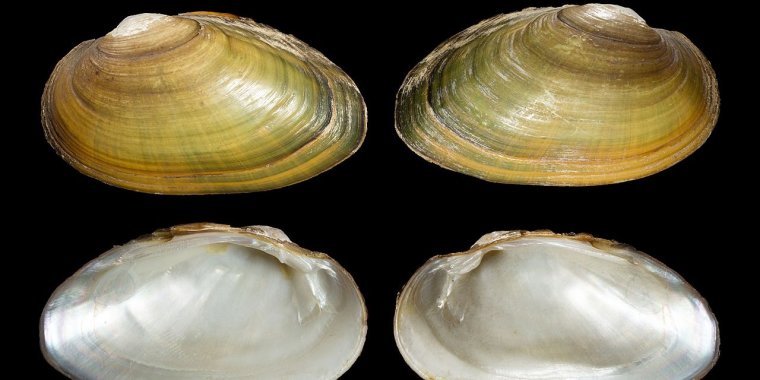| News / Science News |
Remarkable squirting mussels captured on film
In spring, female mussels were seen moving to the water’s edge and anchoring into the riverbed, with their back ends raised above the waterline.

Unio crassus. Photo: Museum national d'Histoire naturelle/Wikimedia commons
Then they squirted out regular water jets, which landed in the water up to a metre away. Squirting cycles lasted 3-6 hours.
This behaviour has never been seen in any other mussel species.
The jets disturb the river surface and attract fish. Mussel larvae in the jets can then attach to the gills of the fish and complete their metamorphosis into adults.
“Who'd have thought that a mussel, that doesn't even have a head or a brain, knows to move to the river margin and squirt jets of water back into the river during springtime? It’s amazing!” said Professor David Aldridge in the University of Cambridge’s Department of Zoology, lead author of the report.
Unlike other mussel species, Unio crassus has a limited range of suitable host fishes – including minnows and chub. These species were attracted to the falling water jets.
The researchers think the mussels squirt water jets to increase the chances of their larvae attaching to the right host fishes. By being squirted into the air and not the water, the larvae are propelled greater distances from the parent mussel.
The study was carried out during spring in the Biała Tarnowska River, Poland. Six squirts were collected from each mussel for analysis – which confirmed that they contained viable mussel larvae.
Before now, there was only anecdotal evidence of this behaviour. Some scientists thought the water jets might be a way for the mussels to expel faeces.
This behaviour could explain why Unio crassus is an endangered species. Climbing out of the water to squirt makes it vulnerable to floods, destruction of river margins, and predators like mink. And its need for specific host fishes links its survival to theirs.
Understanding how this species completes its life cycle is important for its conservation under changing environmental conditions. (University of Cambridge)
YOU MAY ALSO LIKE





